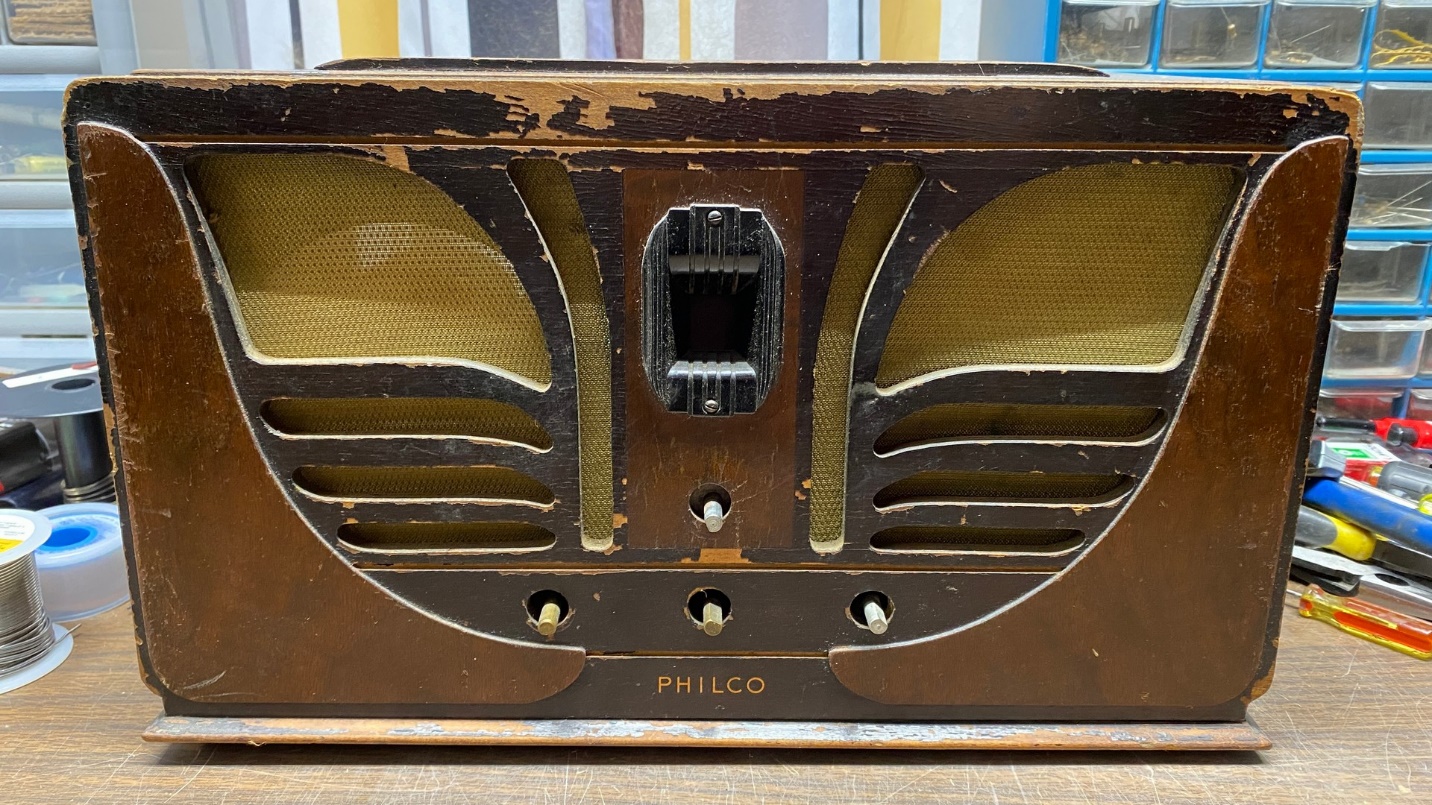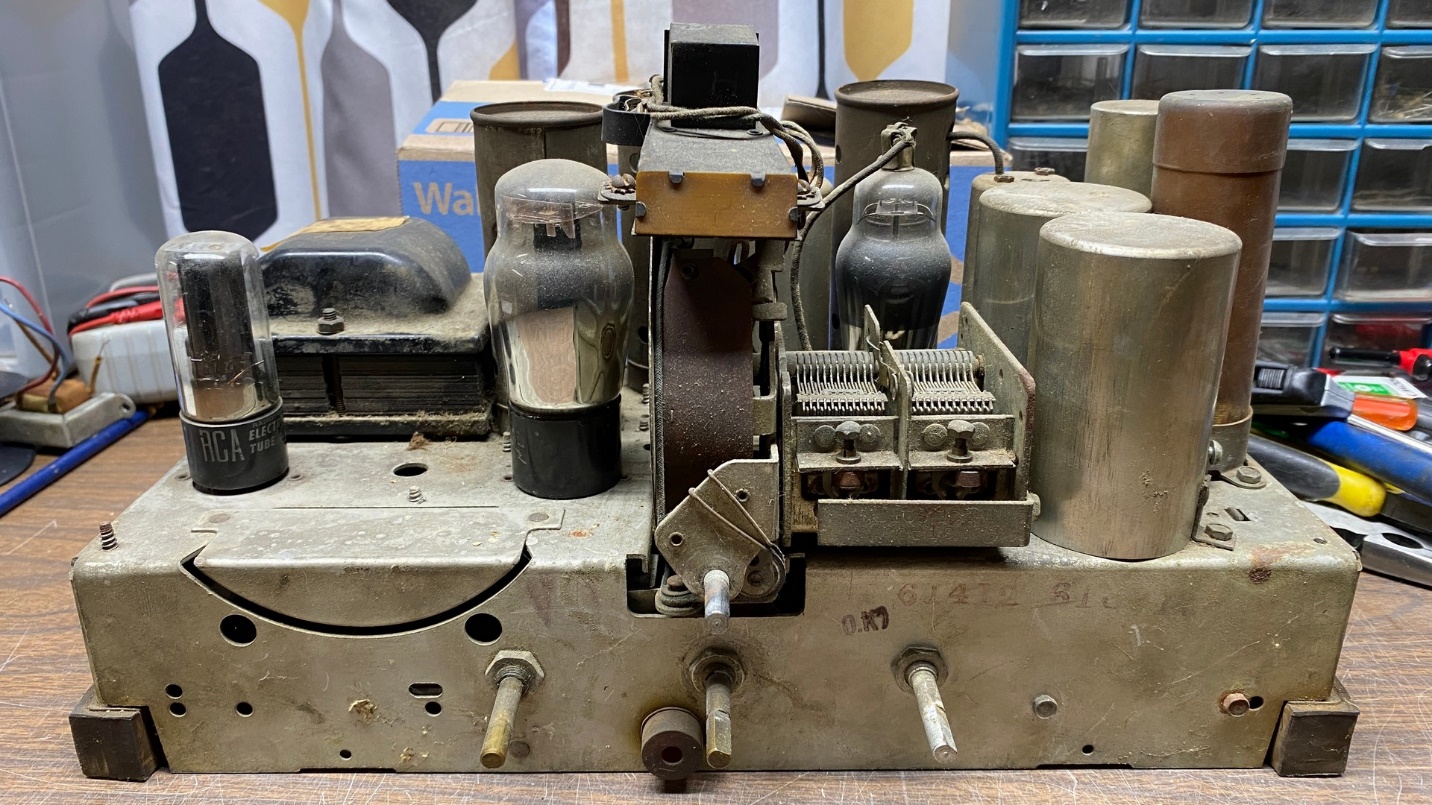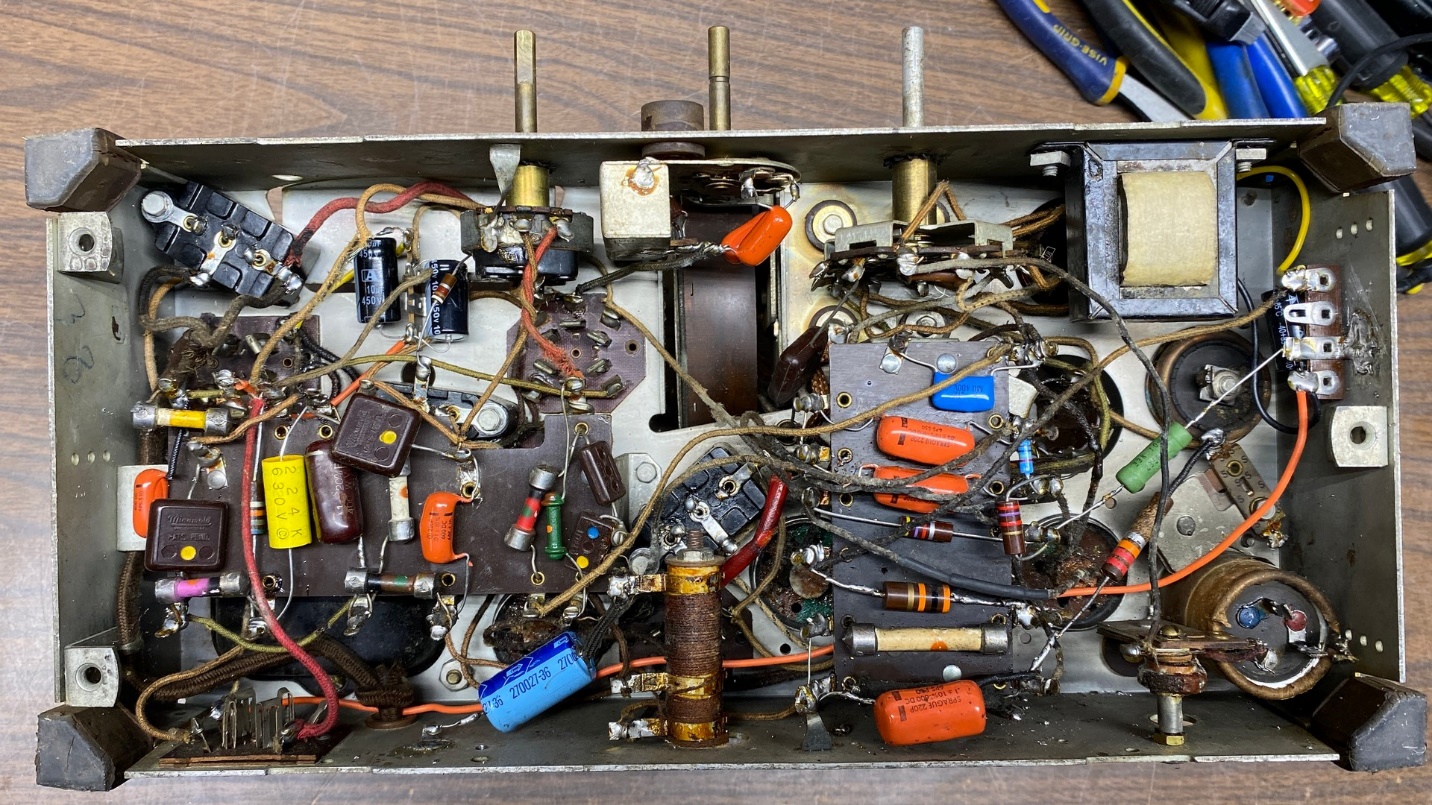
For several years now, I have had a Philco model 45C “Butterfly” cabinet sitting around here, waiting for me to do something with it. And for just about the same length of time, I have had a Philco chassis from a model 29X radio patiently waiting its turn on the workbench.
Since I do not have a 45C chassis, and since the 29 chassis is very similar to the 45 chassis, I decided to combine both into one radio some time ago but only now am I getting around to doing something with these parts.

A front view of the Philco model 29 chassis.
You will notice that this model 29 chassis (pictured above) has a shadow meter, as do all Philco model 29 sets. This shadow meter will have to go, as there is no room for it inside the 45C “Butterfly” cabinet. In addition, there is no provision for a shadow meter in the 45C’s escutcheon. This will be a simple matter as it will only require that I replace the meter with a small resistor.

A top view of the same chassis.
The chassis itself only has some dust and dirt and appears to be rust free. This is always a plus when it comes to working on 80+ year old radios (this one is now about 87 years old).
It has been worked on in the recent past by someone. Looking under the chassis, we can see all the paper capacitors have been replaced, mostly with Sprague Orange Drops. The original electrolytic cans were disconnected and replaced with individual electrolytics. At least the original electrolytic cans were left in place for appearance.

Looking underneath this chassis, you can tell it has been worked on in the recent past.
I plan to replace all those Orange Drops with old paper capacitor shells which I will restuff with new yellow film capacitors. I will replace all resistors with new ones. I have to say that, while I admire those who go to the trouble of molding resistor shells which look like 1930s resistors and contain new resistors, I am not going to go to that much trouble.
I also intend to restuff the old electrolytic cans with new film capacitors. The single 6 uF copper Mershon can should be fairly easy to restuff. The triple section can which contains two 8 uF capacitors and a low voltage 10 uF capacitor will likely be more of a challenge.
This radio restoration will not be a simple procedure, as were the two Transitone chassis I restored in December and January, so this will likely have multiple parts here on the blog. Stay tuned…next time I will get started on the actual work.